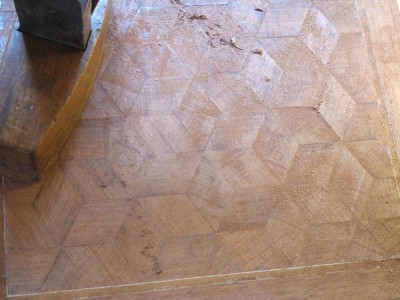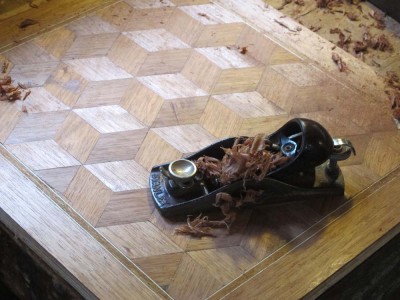Parquetry Tutorial – Completion
With the applied parquetry solidly glued down and stable, the final steps revolve around getting that surface flat and smooth. This is necessary since we started out with sawn veneers, which by definition will have some variations in thickness.
Since the grain directions run in multiple directions, the tool of preference for gross flattening in smoothing has been for over 200 years a toothing plane. A modern option includes a so-called “Japanese” rasp which is comprised of numerous hacksaw blades configured into a surfacing tool. Using this approach, the rough and irregular surface can be rendered into a flat but not perfectly smooth surface.
Following the toother or rasp comes the card scraper, either hand-held or handled, or even a finely tuned smoothing plane (I actually find my low-angled Stanley block plane to wrok perfectly for this) to yield a flat, smooth surface ready for whatever finishing regime you choose.
And, you are done!
In closing I want to thank Rob Young of the Kansas City Woodworker’s Guild for requesting and encouraging me to compile this series of blog posts to help explain the steps we were executing during the workshop I taught there. Thanks Rob!
Over the next couple of weeks I will be combining this long series of blog posts into a single tutorial which I will post in the “Writings” section of the web site, and will announce that addition to the archive here.






Join the Conversation!